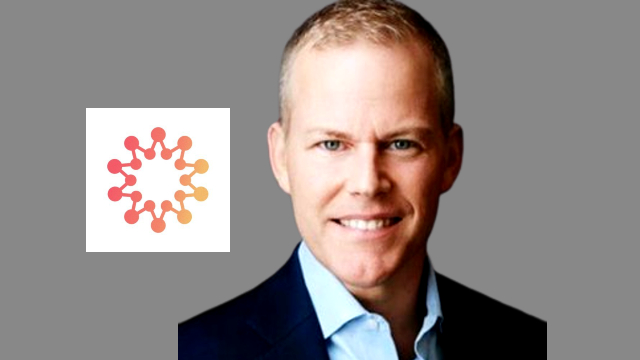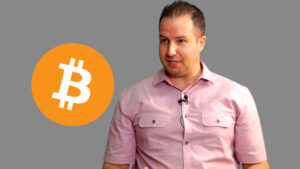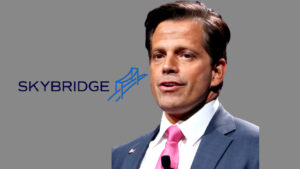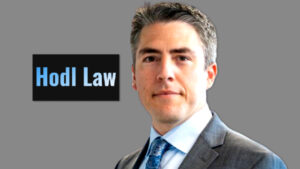Shayne Higdon is the Co-Founder and CEO of the HBAR Foundation. In this interview we discuss the latest updates with the HBAR Foundation and Hedera, HBAR listing on Coinbase, partnerships, NFTs on Hedera, Hedera’s roadmap, crypto regulations, CBDCs and more.
Transcript
Welcome back to The Thinking Crypto Podcast, your home for cryptocurrency news and interviews, with me today. Shayne Higdon, who’s the co-founder and CEO of the HBAR Foundation. Shayne, great to have you on the show.
- Likewise, Tony. Thanks for inviting me.
- Well, Shayne, I’m a big Hedera Hashgraph fan, and I hold the HBAR token in full transparency, so I’m super excited to speak with you and all the great things you guys are doing. But let’s start with your background. Where are you from and where’d you grow up?
- Yeah, great question. So I am from East Texas. I live in Texas currently, and born and raised. I did move around professionally, so I lived in Southern California for a while, Boulder, Colorado for a while, but came back to my roots back in 2014 to be closer to family.
- And how did you end up working at the HBAR Foundation?
- So that’s an interesting intersection. So, previous to the HBAR Foundation, I was advising a FinTech unicorn called High Radius. And prior to that I was president of one of the divisions at a company called BMC Software, which is a publicly traded company that went private by Bain Golden Gate and Insight Venture Partners. We then, after almost five years, then sold that company to KKR. They continue to do incredible things and continue to innovate under their new leadership. And so as I was thinking about what do I do next, I built my career in the early days of the internet, I was a web developer, developing in languages that probably don’t exist anymore. Things like ColdFusion, Visual Basic, C++. I know that exists, but Java to some extent, JavaScript. And so I felt like as I was continuing to keep track of cryptocurrency, Bitcoin, Ethereum, et cetera, I just had an investment thesis personally that said, “Where are the workloads or applications getting built?” It was that simple. And these were applications. I didn’t specifically look for DeFi related applications. I wasn’t looking to speculate on any given token or chain per se, but I was looking at where are the developers centralizing and what and where are they building? And so as I began doing research, certainly came across Ethereum. Others like Quant, Chainlink, Cardano for their smart contracts, et cetera. I then came across Hedera, which had a lot of enterprise brands associated to it that caught my attention. I didn’t know what it meant at the time. And so like, I guess any good sleuth, I went to LinkedIn to see who I knew at Hedera. And lo and behold, I knew Christian Hasker, Christian and I worked together many, many years ago at Quest Software where I was a senior executive and ran both a business unit there as well as mergers and acquisitions. And so I reached out to Christian and said, “I’d love to learn more about Hedera.” And so that kicked off this possibility around, how does Hedera continue to further decentralize what they were doing, not just the decentralization, because they do have, now I think it’s 26 or 27 council members, and that’s going to 39. So there is decentralization there while we don’t have, permissionless nodes yet. The fact is that I felt like, further decentralizing in creating a foundation like other chains had, was something that was interesting.
- Yeah, that absolutely makes sense. And Shayne, something you mentioned about, you worked in the early days of the internet, you’re a coder and things like that. I’ve found myself speaking to a lot of entrepreneurs and even folks who worked in Web 1.0, Web 2.0 my goodness, are now, jumping into crypto. And it’s so interesting to see that evolution and some of the biggest names, your Jeremy Allaire, the Mike Belshe, the guys are at Netscape and so forth, they’re all here now, it’s fascinating.
- Well, and even, Marc Andreessen right? Who ultimately created that, as an investor, they’ve got their crypto fund that they created with Andreessen Horowitz. And so, there’s certainly a lot pouring into this. And I think, this idea of, and I think it was Chris Dixon who said this idea of Web one was read, Web two was read, write, Web three is read write, own, I think is really interesting as a concept. And I don’t think, while there’s a lot of folks including myself that have a vision of what the future is going to look like, I don’t think we really understand where this technology is going to take us. I don’t think anybody could envision, what the iPhone would be today when it was first launched, or what the internet was going to be when we were first writing applications and there’s story after story where you’ve seen the evolution. I think the key for our ecosystem and the key for the foundation and Hedera and other change more broadly is have you set yourself up in a way that allows you to maneuver and or pivot to where the market goes in a really quick way. And that’s why for us, we’re trying to catch, for us being the foundation, we’re trying to cast a wide net, right? To make sure that, again, we’re not trying to pick winners on, hey, if I was a venture capitalist, oftentimes you can only have a single investment in a given market category. Otherwise, there’s a conflict of interest in many ways, for us, because the return isn’t in the form of internal rate of return or IRR, which is what oftentimes VCs measure as success. we’re looking for network effects, right? We’re looking for things like TVL growth, we’re looking for account creation, we’re looking for transactions per second. All of those things are really, really important to change. And so for us, the return, if you will, is in the form of growth of the ecosystem and the network effects associated to that. And so for us to be able to do that, we’ve gotta invest in, key teams that either have been there and done that, or in many cases, have failed and learned a lot from their failure and are going to do things differently this time. And so we wanna be able to incentivize those folks to build, to create, on what we believe is the best network in the world for many reasons.
- Yeah, it’s amazing the enterprise partnerships you guys have gotten. I remember interviewing Mance Harmon, I think it was last year, and I’m just blown away by these partnerships end of hard work that you guys are putting to get them. But before we go into a bit of that, just because there is sometimes new folks listening to these podcasts and watching, can you tell us, what makes the Hedera blockchain or network different from other blockchains out there and why these enterprises are coming to you versus going to the other ones?
- Yeah, great question. So first off, we’re not a blockchain. And I think that is a big difference in that, we are a hashgraph consensus mechanism that leverages a gossip protocol. So, there’s not this serial need to create a block and then a set of transactions on the block. The gossip protocol allows, a message to be sent out and received and then validated by multiple nodes at the same time. And it doesn’t require every node all the time to be able to see every transaction and or vote or on the proper transaction list associated to it. And so it makes it incredibly, incredibly fast. But I think one of the things that allows us to be able to get some of these partnerships is also the mechanism of the fact that we are carbon negative. So we are the most efficient in terms of energy usage of any, cryptocurrency network in the world. There’s a report by UCL that has focused on comparing us to so many other, whether it’s Bitcoin, Ethereum, Algorand, Avalanche, et cetera. And we happen to be carbon negative, not just carbon neutral. And I think, where you’ve got many multinational, multi global organizations that are looking at what is my impact in the world and how do I reduce that footprint? We become a natural destination for folks looking to do that. The other thing is the fact that our fees don’t fluctuate. And I think this is a really big element.
- That’s interesting.
- If you are looking to build a business, truly a business, you’ve gotta generate revenue and you’ve gotta manage costs If you are an enterprise, right? Costs are a very big aspect ’cause it’s the only thing you can control, right? You can’t control the amount of revenue you generate or the number of users, but you can control how much it costs to deliver a service. And so for us, we’ve got a couple of transaction types. One is called the Hedera Consensus Service. It’s the main service for our hashgraph technology and algorithm. And each of those API calls, those transactions cost one, 1000th of a penny. Then secondly is the Hedera Token Service. So if you’re looking to create, tokens and I know we’ll probably get into some use cases and folks that are creating tokens on the network or tokenizing other assets, those cost one 10th of a penny. So if you are looking at building a service, you can estimate the number of HCS transactions, the number of HTS transactions, within your application, and you can determine if you get the kind of demand for your application, here’s what it’s gonna cost to deliver that. That is a really big benefit to so many organizations as opposed to having fluctuating gas fees, passing that on to the user. I think that’s really, really important. Two other points that make us really, really unique is our security, right? We have the best security in the world is called ABFT or Asynchronous Byzantine Fault Tolerance Security. And it is the most secure in the world. I think you’ve got, when you’re looking at some of the use cases on the network that zero proof capability and security is paramount. And then finally the speed, right? Today we’re throttled at about 10,000 transactions per second, through charting that can go to a hundred thousand plus transactions per second. If you compare that to the Visa network, that that does 70,000 transactions per second. So we are right for continued innovation and supporting some of the largest use cases in the world.
- That’s amazing. And obviously you’ve got huge names in your governing council such as Google, Boeing, IBM and so forth. I don’t know how much you can share, but I gotta ask, can you tell us about maybe some use cases that some of these companies are leveraging the Hedera network for, whether it be tokenization, payments, whatever it may be. Can you highlight some of those?
- Yeah, for sure. So a couple things. One is all governor and council members participate by running a consensus note. So I think that’s first and foremost, I think that’s really important to understand. But in addition to that, the governance of the network includes different committees. So from a structural perspective, you have the coin committee, which is managing and making decisions around treasury and treasury allocation. You’ve got the corporate committee, which is looking at and governing, the overall network and Hedera and what they’re trying to do as an entity. You’ve got the technical committee, which is governing and looking at all of the various HIPs or what we call the Hedera Improvement Proposals and making sure I’m prioritizing all the feedback coming from the community to make sure that we’re continuing to deliver the best, most sustainable network in the world. And then finally, the membership committee and the membership committee is focused on just that membership, right? From a governing council perspective. So it’s they that determined based on various candidacy who will ultimately become a governing council member. So that’s first and foremost. So you’ve got all of these very large organizations, most recently Abrdn, prior to that you’ve had, Ubisoft and ServiceNow and others that are doing incredible things on the network and are very engaged in all of these communities and some at the Hedera board level. So now I’ll transition to really kind of focusing on, what are some of the applications that are happening on the network. So first we have something called TOKO. TOKO is a project built by one of the council members, DLA Piper, and it has a platform that is focused on tokenizing assets, tokenizing almost anything. And so their platform and ultimately their marketplace is something that, if you are looking to tokenize, in fact, I believe they were the first tokenized debt instrument, that was, ever created. And so that’s a really interesting concept and something that I think we’re going to see more and more of as the bridging between DeFi, DeFi one, DeFi two, and Tradify really start taking shape as more and more folks believe that they can tokenize real world assets, whether those be real estate assets, contracts, or whether in the case of one of our latest, projects tokenizing and looking at how to store, your own personal files, multimedia files, wills, estate planning documents, et cetera. Then one is another use case is from Avery Dennison. Avery Dennison is a council member and has been for a long time focused on, they do a lot of RFID tagging, work with some of the largest brands in the world. They created a platform called atma.io, atma.io. You can go the website. What this is, is focus on chronicling billions of items from some of the biggest brands in the world, Adidas, Levi’s, et cetera. And what they’re focused on doing is helping these organizations reduce their carbon footprint. So they’ve created a marketplace where, they can buy and sell carbon credits and carbon offsets. And so if you are providing a physical good, and let’s say that physical good goes through 12 different stages of creation from raw material to retail sale, at each stage, a lot of these public companies now have to determine how much carbon footprint is being used at each stage. Well, if that’s the case, why shouldn’t I be able to buy a carbon offset to reduce my footprint? And so that’s what atma.io does. It’s live on the network, we’ve seen significant transaction volume as a result of that, and it’s gonna continue to grow. And then finally, I think interestingly enough, you mentioned IBM, IBM with their Hyperledger Fabric capabilities, there’s quite a few projects that use both Hyperledger Fabric and Hedera’s Consensus Service to bridge this, what I’ll call on premises plus cloud based decentralized deployment mechanisms. And then lastly, ServiceNow. ServiceNow has publicly stated and created tokenizing service level agreements. So if you’re familiar with centralized IT or IT organizations of many companies, IT, for the longest time was really a call center. Many of them now are trying to become a profit center in some way, particularly with the advent of a multi-cloud world, ServiceNow, who has led so much of the cloud capabilities, particularly around, IT management and HR and so many other things. And the way that we work, with their solutions, tokenizing service level agreements is really, really important, why? Today it’s a very manual process where, organizations, if you’ve got a business unit that’s dependent on your IT organization, how many resources are you using related to IT? And what was your allocation of those resources? And if there is, if you’re using more than what you were budgeted, there’s gotta be a chargeback mechanism, today that’s largely a spreadsheet exercise, up until ServiceNow tokenizing this and trying to automate that in a more formal way. And so it’s exciting to watch these behemoths continuing to push the innovation envelope.
- That’s amazing. And those are great use cases that you mentioned and from some of the largest companies in the world. Kind of a a weird question I’m gonna ask you, but it’s, and I’ve been trying to wrap my head around this. So Hedera is not a blockchain, however, it’s under the umbrella of crypto and blockchain. So what would you categorize it as Blockchain 2.0? Like how do you pitch it to these guys? ‘Cause I’m sure they asked you, is it a blockchain that you have or what’s the categorization that you provide for that?
- We believe we’re in a category on our own. We consider to be a layer one because we have a consensus mechanism, but because of the way Dr. Layman Beard architected and wrote the algorithm, it just becomes, the fastest in the world. So, when you think about speed, right? Finality for us is under four seconds. Look at the finality of Ethereum or Bitcoin or other networks, it’s significantly longer. And so for us, we don’t want to have the moniker of, we’re a blockchain because that has its own connotations, which, oftentimes are good from a decentralization perspective, but not necessarily from a scale perspective in terms of speed or security. And so we want to define a different class, whether you call it Blockchain 2.0. Again, I personally don’t like that only because, that kind of puts us under that blockchain umbrella. We wanna say, “Hey, there’s a new and different way to do what many blockchains were and are trying to do. And this is us.” And I think as we continue to evolve the network, this last year we became fully open sourced. I don’t think a lot of people know that still. So on August 5th of this year, the entire algorithm and everything above it and below it is completely open sourced. And so that’s really, really important because now guess what, any project anywhere can download the full source code and effectively begin writing and creating. The other thing that’s happened is we become EVM compatible. So if you have, if you want to take your solidity based application, put it directly on the EVM and begin to run it natively on Hedera, there’s no need to do a layer two roll up to make this happen. It makes it really, really simple. And I think that’s why we’re seeing so many projects coming from Solana, Polygon and others, NFT projects that are just exploding because we made it really simple. There are some areas that we need to continue to improve the developer experience, no doubt, and do things. But we continue to evolve that, as fast as we possibly can. And we made great strides, great strides into connecting to, some of the latest and greatest developer tools, great strides, and just yesterday we announced native staking on the platform. And so there’s a lot of things that we’ve been doing because we’ve been very methodical about the way we ultimately build this network.
- That’s exciting. And I wanna talk about the token, the HBAR token recently was listed on Coinbase. I know a lot of people are waiting for that. Can you tell us about that?
- Yeah, it’s Coinbase is one of the biggest exchanges, in the world and certainly in the US and I think that it was one of those things where again, Hedera generally had not been focused for a lot of reasons on US exchanges or exchanges in general, largely because we wanted to be very focused and we wanted to be regulatory compliance. It’s what we’ve always really tried to do. And when we were in a position where we believed that we had more applications, we needed more liquidity in the market, and ultimately we needed more security in the network, that’s when we put a larger push on retail and getting liquidity in the market to be able to secure the network more effectively. And so that’s what we’ve done. And I think we’re excited to have it listed on, one of the premier exchanges.
- For sure, now you guys are obviously working on a lot, what’s on the roadmap for the remainder of 2022 and then into 2023? Anything you can highlight. And I know that sometimes things are under wraps, but anything that you can share there.
- Yeah, and so, the way that we structured the foundation, if you recall, we had four funds and two, what we’re calling market development funds, the crypto economy fund, which we’ve largely focused on on ramps exchanges and wallets. And the things that you’ve seen us announce and do, we feel like we’ve done really, really good in that area in terms of continue to build out the ecosystem to allow people, to build applications, to get access to HBAR and others and store, their various tokens, whether HBAR or otherwise, we’ve gotten some native DeFi Dexus, SaucerSwap, HeliSwap and others, there is more coming. And so we continue to be bullish on what we’re doing in that space to continue to build out what I’ll call crypto side of the network. Then we’ve got the Metaverse fund. The Metaverse fund we’ve been really busy, in that used to be called the consumer engagement and brand loyalty fund. we’ve since named that the Metaverse Fund focusing a lot on the creator economy, NFT projects. There’s more and more that you’re going to continue to see from us in that vein. And we continue to deploy funds in that area because we just think, NFT equals ownership and how is that going to continue to take shape as we’ve made investments in companies like Metaverse and projects like Metaverse that have projects like the Mall and so many others that we’re excited about. We also have our sustainability or sustainable impact fund where we’ve made a lot of investment related to ESG initiatives, Environmental Social Governance initiatives across the world. And whether it’s Water Ledger, Tamuwa, DOVU, et cetera, people and organizations, projects, looking to have a more positive impact on the world in which we live. And we want too, certainly, we try to live by that being carbon negative, but we also want to deploy funds in that area, and you’re gonna continue to see us do that. And then finally, our payments and FinTech fund, which is an area focused on, cross border payments, et cetera. I mean, Stablecoin, CBDC, we’ve had multiple that are being piloted on our network, whether it’s through Standard Bank, M-Techs and Bali networks throughout Africa and the Caribbean. And we want to continue to help folks be able to do this. You’ve seen, the announcement of ANZ Bank and our Open Zeppelin support, as ANZ Bank is building a stable point on Hedera. So there’s so many great things that are happening. And then our MDF funds, we’ve got two market development funds that we focused on and we’re continue to lean into. One is our decentralized identity fund and we made some healthcare investments, we made some other investments to really focus on this idea of decentralized identity KYC, how do we continue to make things secure by understanding and knowing who is on the other side of a transaction. And then finally, our women founders fund. So if women own at least 30% of a given project or company, that’s something that we have been investing in and looking to continue to invest in to continue to promote development and education and success of women across the world.
- Wow. That’s a full roadmap there. You guys are doing a lot. I’m very curious about the CBDC item, because folks in general are seeing these governments and central banks working towards this and they’re selecting different platforms, networks, blockchains. I wonder if you, how many central banks, I think you may have mentioned it, but I wanted to confirm like how many central banks or governments, I dunno if you can share that, but are are building on Hedera?
- I can’t share all of that, but I will tell you, it’s certainly a few. And we have been partnering with the likes of a company called M-Tech. And Carmel is doing incredible work in many countries across the world, leveraging Hedera technology with what she’s doing. Zimbabwe Networks is another one throughout Africa and the Caribbean. And then we publicly announced ANZ Bank out of Australia with the A$DC Stablecoin that they’re creating on Hedera. And so I think that when you look at governments and organizations, they look at our regulatory posture, which we’ve always had a very positive regulatory, we want to do things with high integrity aligned to current regulatory bodies. Were being headquartered in the US. And so our approach is really to educate and have conversations with various regulators throughout the journey. And these include centralized governments. And so we’re not necessarily driving those agendas, but we wanna be a part of, we wanna be a part of the conversation. We know that where regulation and CBDS and Stablecoins are today, is not where they’re going to be in a year or five years from now. And so what does that look like? And that goes back to my earlier comments. We have to be prepared as an ecosystem to be able to support and pivot as necessary to support, these key initiatives that are going to be a part of our children’s future.
- Yeah, absolutely. Let’s talk about Crypto Winter. Obviously we’re in a bear market, it’s stuff out there, macroeconomic factors, but look, it’s all market cycles. This has happened in 2018, 2019 and even, years before. What are your thoughts on when we might come out of Crypto Winter and see Crypto Spring?
- I don’t have a point of view per se on when we’re going to come out of it. I don’t watch, the hash rates or anything. Like people look at the having rates of Bitcoin and others. I really am focused on the activities of the ecosystem and what are we building. I don’t know if you guys have seen that video of Jeff Bezos, in the early days of Amazon, the stock had gotten puled, it was, I don’t know, six or seven bucks and he makes the comment like, “Hey look, I’m looking at all of our internal metrics and everything is up to the right.” And I’m paraphrasing what he said and that’s exactly what we’re doing. I’m looking at our account growth, I’m looking at our TBL growth. I don’t know if you’ve seen, but as of last week, our TBL growth has surpassed Cardano, so we’re feeling really, really good about the projects we’re investing in. Our TPS has cranked, I mean, we’re just slightly below Stellar right now in terms of transactions per second. We’ve done more transactions than the Ethereum network at over two and a half billion transactions. So all of the things that we are doing, the amount of money we deployed, we’ve deployed over $360 million, across 175 projects since the beginning of this year. So if I look at all the things that we’re doing, we’re doing the right things, they’re up to the right, our account creation has more than quadrupled since we created the foundation and it continues to grow on a daily basis. All of those things are right. And so I believe that based on that we are going to see massive success in this network as we come out of Crypto Winter, which, as many know and are seeing given how much now we are tethered to the Nasdaq, I mean the rise and fall of, our market, almost mirrors the rise and fall of the Nasdaq. And so, for us, I do think us being those in crypto, I do think the macroeconomic environment does have an effect on us. And I believe that as we get out of some of this inflationary period and back to a more stable economic environment that you’re going to see, crypto flourish again. And I wanna have us poised to be able to ride that wave and I think that we are based on all the activities and things that we’ve been doing over the course of the last year as a foundation, and certainly over the course of last several years as Hedera, as Swirlds Labs, and as the foundation, as as building this ecosystem.
- Hmm, for sure. I wanna ask you about crypto regulations because there’s a lot going on. I mean it’s kind of messy, but I think it looks like we’re making progress. You had the Biden executive order, you have bipartisan support pro crypto now both sides of the all, you have the Lummis-Gillibrand Bill but yet you have the SCC and their enforcement actions, and now the CFTC, they just went after Ooki DAO and the US Treasury going after tornado cash, what are your thoughts, and are you optimistic that we’re moving in the right direction? We’ll love to get, from a building standpoint what you guys are seeing from your end.
- Sure, and so, if I think about us as a network, we’ve always had a regulatory compliance spent. We’ve been very conservative. I say we, I mean, Mance and Leemon who built this network from the beginning were very conservative being headquartered in the US and trying to do things aligned to the current regulation of the day. There’s certainly gray areas. And in those gray areas, I think we by and large have taken a more conservative oriented approach. I do think there’s a lot of positivity in things while, whether or not I agree or or disagree with each provision of the Biden executive order or the Lummis-Gillibrand Bill, et cetera. The fact is that we are a part of the conversation. We as crypto are a part of the conversation. I don’t believe we’re going away. It’s going away. And I believe that’s the challenge for the SEC is there’s so much money and there’s money, so much money on the sidelines still, right? When you look at, how much money is invested in US equities, et cetera, there’s this idea that, at some point, our market cap from a crypto perspective, has to be taken into account by the SEC and determining, how can they play well with who we are. You see different things, whether it’s the SEC Ripple case and what, Brad Garlinghouse and others, or thinking, I mean, there’s so much that we don’t know and don’t see related to that, but I’m an optimist. I think that there is going to be regulation that comes and with regulation comes more certainty and clarity. With that clarity comes more investment, more innovation, faster change related to what we’re doing. And so I see all of that really being a positive impact on what we’re trying to do. So for us, we tried to take the approach of we want to continue to educate the market on the technology where it is, its benefits, its use. That’s why we really, really focus on the use cases that are going to be deployed on the network. That’s what’s going to grow. That’s what’s going to grow the network. That’s what’s gonna grow use. And so we want to have conversations with the various regulators throughout this journey, help educate them, give them insights that they may or may not have. And also keep abreast of the changing wins, as they continue to evolve.
- Yeah, absolutely. And hopefully the US can get this right maybe next year, congress, I know right now with the midterms and so forth, it’s a mess. But hopefully next year congress can act and we get the green light for the entire market and folks can really start building even more without fear of, any type of situations that with the SEC and so forth.
- Yeah, that’s right. And I think one of the other things that is interesting and it kind of dovetails into your original comment around how do you guys get these big enterprises? When you look at some of the networks like Ethereum and others that allow you to run permissionless nodes, that’s another element or facet of these networks that, if you’re a multinational enterprise and you don’t know who’s actually running a node, and what if it’s an enemy state, right? Or a nation state that you don’t wanna do business with. That risk is too big. And for us, we haven’t gone to permissionless nodes, right? For those reasons. And we’re hoping to go knock on wood to permission nodes, in the next few months. And so that for us is something that continues to make us different. That if you’re building, if you’re an enterprise and you’re building an application, and so when you think about that related to regulation in the industry, you feel like, Hedera is a pretty safe place to be. If you’ve got an innovation or digital transformation agenda, it’s a pretty safe place to be, to run, the applications that you’re building for the future.
- Yeah, for sure. Shayne I got some wrap up questions here for you.
- Okay.
- Which is rapid fire, favorite food?
- Mexican.
- Favorite musician or band?
- Ooh, Prince.
- Favorite movie?
- Band of Brothers.
- Favorite book?
- The Bible.
- And what’s your hobby when you’re not working at the HBAR Foundation?
- Spending time with my family.
- And finally, if you could create your own Metaverse, what would the theme be?
- Something related to sports.
- Nice, Shayne, great speaking with you. Thank you so much for joining me. You guys are doing amazing things and I will love to have you back on as the updates roll out on your end. But thank you for joining me.
- I’d welcome it, Tony, it’s been great. Thank you so much for the time.







